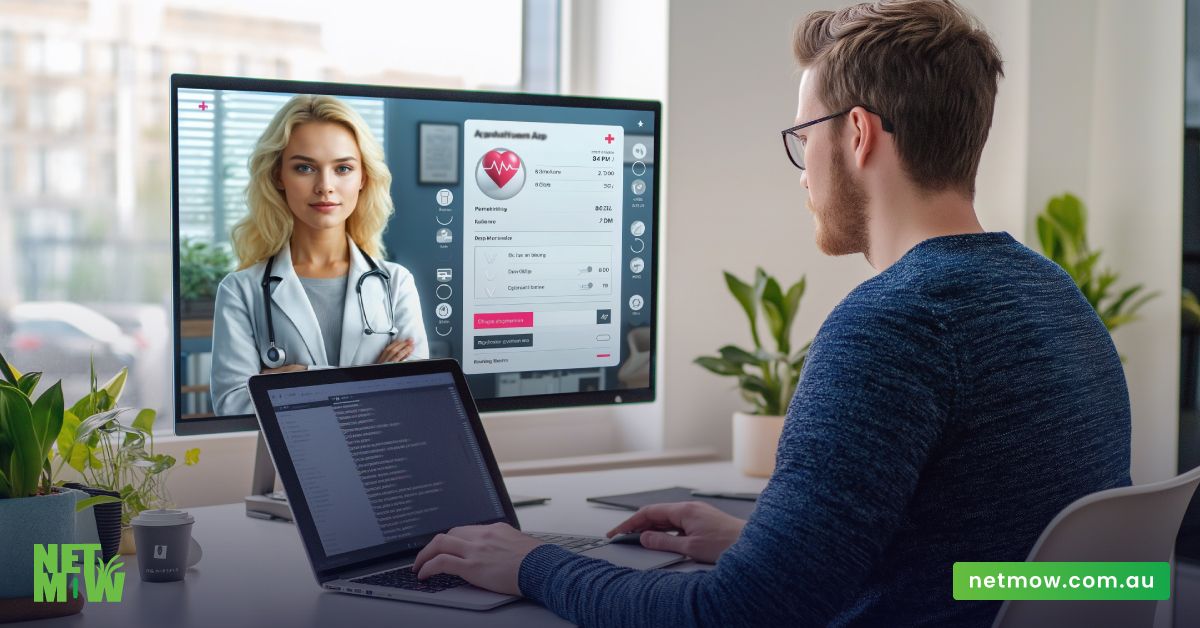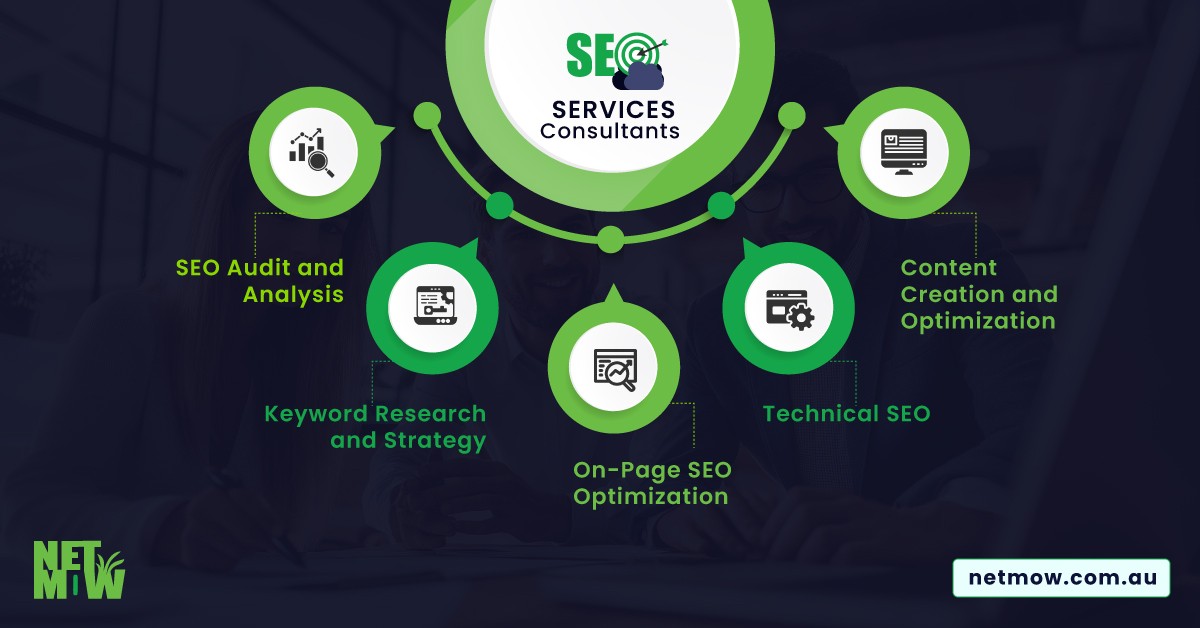
In the modern digital era, web applications are essential resources for businesses aiming to improve their online presence and streamline operations. This thorough guide will examine the fundamental elements of web app development services, exploring their benefits, types, key components, and the development process. By understanding these elements, you’ll be well-equipped to make informed decisions about investing in web applications that align with your business goals.
What is Web App Development?
Web app development involves designing applications that users access via a web browser. Unlike conventional software that must be installed on a user’s device, web apps operate from remote servers and can be utilised from any device with internet access. This accessibility makes them popular for businesses looking to provide their customers with seamless and consistent experiences across various platforms.
Difference Between Web Apps and Traditional Websites
While both web apps and traditional websites are accessed via a browser, they serve different purposes:
- Web Apps: Designed to perform specific functions or tasks, such as online banking or project management. They offer interactive features and often require user authentication.
- Traditional Websites: Primarily informational, providing content such as articles, blog posts, and static pages. They offer limited interactivity compared to web apps.
Key Features of Web Applications
Several key features distinguish web applications:
- Interactivity: Web apps provide interactive elements such as forms, buttons, and dynamic content.
- Real-Time Updates: Changes can be made in real-time, ensuring users can always access the latest information.
- Cross-Platform Compatibility: Accessible from any device with a web browser, making them versatile and convenient.
- Scalability: Web apps can be scaled to handle increased user demand and additional features.
Why Invest in Web App Development?
Investing in web app development can yield significant benefits for your business. Here’s why:
Enhanced Functionality
Tailored web applications can be developed to suit particular business needs, offering functionalities that generic software may lack. This customisation ensures the app aligns perfectly with your business processes and goals.
Better User Experience
A well-designed web app enhances user experience through intuitive interfaces, fast load times, and seamless interactions. This approach can result in greater user satisfaction and improved engagement.
Increased Accessibility
Web applications can be accessible from any device with internet access, allowing users to interact with your services anytime, anywhere. This flexibility is crucial in a mobile-first world.
Scalability
As your business grows, so do your needs. Web apps can be scaled to accommodate more users, add features, and increase data volumes, ensuring they consistently adapt to your changing needs.
Competitive Advantage
Investing in innovative web applications can set you apart by offering unique features or superior performance. This advantage can be crucial in drawing and retaining customers.
Types of Web Applications
Web applications come in various forms, each suited to different use cases. Recognising these categories can assist you in selecting the appropriate solution for your business.
Progressive Web Apps (PWAs)
Definition and Features: Progressive Web Apps combine the best web and mobile applications. They are designed to work offline and offer app-like experiences with fast load times and smooth interactions.
Benefits and Use Cases:
- Offline Functionality: Users can access the app even without an internet connection.
- Improved Performance: PWAs load quickly and provide a responsive experience.
- Use Cases: E-commerce platforms, news apps, and social media applications.
Single Page Applications (SPAs)
Definition and Features: Single Page Applications load a single HTML page and dynamically update content as the user interacts with the app. This approach minimises page reloads and enhances user experience.
Benefits and Use Cases:
- Faster Navigation: SPAs offer seamless transitions between different sections of the app.
- Reduced Server Load: Since only data is exchanged with the server, SPAs reduce server load and improve performance.
- Use Cases: Email clients, online editors, and interactive dashboards.
Multi-Page Applications (MPAs)
Definition and Features: Multi-page applications consist of multiple interconnected pages. Each interaction typically involves loading a new page from the server.
Benefits and Use Cases:
- SEO Benefits: MPAs are better for optimising search engines since each page has a URL.
- Scalability: MPAs can handle larger applications with extensive content.
- Use Cases: E-commerce sites, corporate websites, and content-heavy platforms.
Custom Web Applications
Definition and Features: Custom web applications are built from scratch to meet specific business needs. They offer tailored functionality and integration with existing systems.
Benefits and Use Cases:
- Tailored Solutions: Custom apps address unique business requirements that off-the-shelf solutions cannot.
- Integration: This can be integrated with other software systems and APIs.
- Use Cases: Enterprise Resource Planning (ERP) systems and Customer Relationship Management (CRM) software specialised business tools.
Key Components of a Web Application
Understanding the key components of web app development is key to ensuring the success and functionality of the application. Every element contributes a distinct function to guarantee the web app operates smoothly and delivers a positive user experience.
Front-End Development
Definition and Technologies: Front-end development involves creating a web application’s user interface (UI) and user experience (UX) elements. It encompasses everything that users interact with directly in their browsers.
- HTML (HyperText Markup Language): Structures the content on the web page.
- CSS (Cascading Style Sheets): Styles the content, including layout, colours, and fonts.
- JavaScript: Adds interactivity and dynamic features to the web application.
Significance of User Interface and User Experience: A well-designed UI/UX ensures users can easily navigate the application and access its features. Key aspects include:
- Responsive Design: Adjusts seamlessly to different screen sizes and devices, ensuring a uniform user experience.
- Intuitive Navigation: Clear menus and buttons that guide users through the application.
- Accessibility: Ensures the app is usable by individuals with disabilities, adhering to web accessibility standards.
Back-End Development
Definition and Technologies: Back-end development focuses on the web application’s server side. It includes developing and overseeing the server, database, and application logic.
- Server-Side Languages: Python, Ruby, PHP, and Node.js are used to write server-side code.
- Databases: MySQL, PostgreSQL, and MongoDB store and manage data.
- Server Management: Involves handling server configurations, performance, and security.
Importance of Server Management and Data Handling: Efficient back-end development ensures that the web application can handle user requests, process data, and deliver content quickly and securely. Key considerations include:
- Performance Optimisation: Ensuring fast load times and responsiveness.
- Data Security: Protecting sensitive information from unauthorised access.
- Scalability: Ability to handle increased traffic and data as the application grows.

APIs and Integrations
Definition and Role in Web Applications: Application Programming Interfaces (APIs) consist of rules and protocols that enable various software systems to interact with each other. Integrations involve connecting the web app with external services to enhance its functionality.
Common Integrations:
- Payment Gateways: Services like Stripe or PayPal for processing transactions.
- Social Media: Integration with platforms like Facebook and Twitter for sharing and authentication.
- Third-Party Services: APIs for mapping, email, and analytics.
Benefits of APIs and Integrations:
- Enhanced Functionality: Adding features such as payments or social media sharing.
- Improved User Experience: Seamless interactions with other services and platforms.
- Efficiency: Leveraging existing services to reduce development time.
Security Measures
Importance of Web Application Security: Security is critical in web app development to protect against threats and vulnerabilities. Implementing robust security measures helps safeguard user data and maintain trust.
Common Security Practices:
- SSL/TLS Encryption: Secures data during transmission between the server and the user’s browser, ensuring secure communication.
- Data Encryption: Protects sensitive data stored in the database using encryption algorithms.
- Authentication and Authorisation: Ensures that users can only access features and data they are authorised to use.
- Regular Updates and Patching: Keeping software and libraries up-to-date to fix vulnerabilities and improve security.
The Web App Development Process
Developing a web application involves several stages, each crucial for creating a successful and functional product. Here’s a step-by-step breakdown:
Discovery and Planning
Understanding Client Requirements: The first step involves gathering and analysing the client’s needs and objectives. This includes:
- Identifying Goals: Understanding what the client wants to achieve with the web app.
- Defining Target Audience: Determining who will use the app and their needs.
- Establishing Features: Listing the features and functionalities required.
Defining Project Scope and Goals: Clearly outlining the scope helps manage expectations and sets clear milestones. This involves:
- Project Timeline: Establishing deadlines for each development phase.
- Budget: Determining the financial resources allocated for the project.
- Deliverables: Specifying the expected outcomes and deliverables.
Design and Prototyping
Importance of Wireframes and Mockups: Design and prototyping are essential for visualising the web app’s layout and functionality before development begins.
- Wireframes: Basic sketches of the app’s layout, showing the placement of elements and navigation.
- Mockups: Detailed and high-fidelity designs that represent the final look and feel of the app.
Creating User-Friendly Interfaces: Designing intuitive and visually appealing interfaces ensures a positive user experience. This includes:
- Visual Design: Choosing colours, fonts, and graphics that align with the brand.
- Usability Testing: Gathering feedback on the design to refine and improve user interactions.
Development and Coding
Front-End and Back-End Development: The web app’s functionalities are implemented during this phase. It involves:
- Front-End Development: Coding the UI elements using HTML, CSS, and JavaScript.
- Back-End Development: Setting up the server, database, and application logic.
Implementing Features and Functionalities: Adding the required features and ensuring they work seamlessly together. This includes:
- Integrations: Connecting the app with external services and APIs.
- Custom Features: Developing unique functionalities tailored to the client’s needs.
Testing and Quality Assurance
Types of Testing: Testing is crucial for identifying and fixing issues before launch. Common types include:
- Functional Testing: Ensures that the app’s features work as intended.
- Usability Testing: Assesses the interface and user experience.
- Performance Testing: Assesses the app’s speed and responsiveness under various conditions.
Importance of Bug Fixing and Validation: Addressing bugs and validating that the app meets all requirements ensures a high-quality product. This involves:
- Bug Tracking: Identifying and documenting issues.
- Validation: Ensuring the app meets design specifications and user needs.
Deployment and Maintenance
Launching the Web Application: Deploying the web app to a live server and making it accessible to users. This includes:
- Server Configuration: Configuring the server environment for the application.
- Final Testing: Conducting final checks to ensure everything works correctly.
Ongoing Support and Updates: Providing post-launch support and maintenance to address issues and keep the app up-to-date. This involves:
- Bug Fixes: Resolving any problems that occur post-launch.
- Updates: Adding new features and improving functionality based on user feedback.
Choosing the Right Web App Development Service
Selecting the right web app development service is critical to the success of your project. Consider these important factors when making your decision:
Evaluating Development Expertise
Experience and Portfolio: Assessing the experience and portfolio of a web app development service can give you insight into their capabilities and style.
- Previous Projects: Review past projects to gauge the quality and diversity of their work.
- Client Testimonials: Review previous clients’ feedback to understand their satisfaction and experiences.
- Case Studies: Analyse detailed case studies to see how the service tackled different challenges.
Technical Skills and Competencies: Verify that the development team has the technical knowledge and experience to execute your project effectively.
- Technology Stack: Verify their proficiency in relevant technologies and frameworks.
- Specialisation: Look for expertise in front-end, back-end, or full-stack development areas.
Understanding Development Process and Methodology
Project Management Approach: The development process and methodology used by the service can impact the project’s success.
- Agile Methodology: Flexible and iterative approach allowing for changes and continuous improvement.
- Waterfall Methodology: Sequential and structured approach with clearly defined stages.
Communication and Collaboration: Strong communication and teamwork are crucial for a successful collaboration.
- Regular Updates: Ensure the service provides regular updates on project progress.
- Feedback Mechanisms: Look for clear channels for providing feedback and making adjustments.
Assessing Cost and Budget
Pricing Models: Different services may offer various pricing models, including:
- Fixed Price: Set cost for the entire project, which can benefit well-defined projects.
- Hourly Rate: Billing is based on the time spent and is suitable for projects with uncertain scopes.
- Retainer: Ongoing support and development for a fixed monthly fee.
Cost vs. Value: Consider the value provided about the price. Lower-cost options might not always offer the best outcomes.
- Quality of Work: Higher costs reflect better quality and more experienced developers.
- Long-Term Value: Evaluate the development service’s potential long-term benefits and ROI.
Considering Post-Launch Support and Maintenance
Importance of Ongoing Support: Ongoing support and maintenance are essential for maintaining the long-term effectiveness of your web application.
- Bug Fixes: Regular updates and fixes to address any issues that arise.
- Feature Enhancements: Adding new features and improving functionality based on user feedback.
- Technical Support: Technical support is available for troubleshooting and assistance.
Service Agreements: Ensure that the service provides clear agreements regarding post-launch support.
- Support Contracts: Details of what is included in the support contract and any additional costs.
- Response Times: Expected response times for support requests and issue resolution.
Trends and Future Directions in Web App Development
Staying up-to-date with trends and future directions in web app development is essential for leveraging the latest technologies and practices. Here’s what to look out for:
Emerging Technologies
Artificial Intelligence (AI) and Machine Learning: AI and machine learning are increasingly integrated into web applications to enhance functionality and user experience.
- Personalisation: AI can provide personalised recommendations and content based on user behaviour.
- Automation: Machine learning algorithms can automate tasks and processes within the application.
Progressive Web Apps (PWAs): PWAs combine the best web and mobile apps, offering a seamless experience across different devices.
- Offline Functionality: PWAs can work offline or in low-network conditions.
- App-Like Experience: Provides a native app experience with fast loading times and smooth interactions.
Serverless Architecture: Serverless computing allows developers to build and run applications without managing server infrastructure.
- Scalability: Automatically scales with user demand, reducing the need for manual intervention.
- Cost Efficiency: The pay-as-you-go model can reduce costs by only charging for actual usage.
User Experience and Design Innovations
Minimalist Design: Minimalist design emphasises simplicity and clarity, enhancing user experience by reducing clutter.
- Clean Layouts: Use whitespace and simple layouts to make content more accessible.
- Focused Interactions: Streamlined interactions to improve usability and engagement.
Voice User Interface (VUI): VUI allows users to interact with web applications using voice commands.
- Voice Search: Enhances search functionality with voice recognition.
- Voice Commands: Enables hands-free control and navigation within the application.
Security and Privacy Enhancements
Data Privacy Regulations: Adherence to data privacy regulations such as GDPR and CCPA is crucial for protecting user information.
- Compliance: Ensure the web app complies with relevant data protection laws.
- User Consent: Implement mechanisms for obtaining user consent for data collection and processing.
Advanced Security Measures: Incorporating advanced security measures helps protect against evolving threats.
- Multi-Factor Authentication (MFA): Implements an extra security measure for user accounts.
- Regular Security Audits: Conduct audits to identify and address potential vulnerabilities.
Performance Optimisation Techniques
Speed and Efficiency: Optimising the performance of web applications is essential for a positive user experience.
- Caching: Implement caching strategies to reduce load times and improve responsiveness.
- Content Delivery Networks (CDNs): CDNs distribute content and enhance load times across different regions.
Scalability: Designing applications with scalability ensures they can handle increased traffic and demand.
- Load Balancing: Balance traffic among several servers to avoid excessive load.
- Microservices Architecture: Divide the application into smaller, manageable components.
Conclusion
In conclusion, selecting a reputable web app development service is crucial for building a successful and effective web application. By following the outlined steps and best practices and considering emerging trends, you can ensure that your web app meets your business objectives and delivers a seamless user experience.
Web app development is a multifaceted process that requires careful planning, execution, and ongoing maintenance. From defining your goals and selecting the right technology stack to prioritising user experience and ensuring robust security, every aspect plays a vital role in the success of your project.
If you’re ready to take the next step in developing your web application, Netmow is here to help. As a leading software development and web development agency, we offer comprehensive web app development services tailored to your unique needs. Contact us today to begin your path toward building a powerful and effective web app.








